新人教版高中英语必修3Unit 3 Diverse Cultures教学设计一
-
- 页数:7页
- 字数:约 13235 字
- 大小:81.75KB
- 格式:.docx
- 版本:Office2016及以上版本
- 作者:许伟工作室
Unit 3 DiverseCultures教学设计
Period 1 Listening andspeaking
听力部分分为两个部分:Listening andspeaking和Listening and talking。
Listening and speaking板块的活动主题是“讨论几种美国食品的起源”( Talk about the origins ofAmerican food)。美国的多元文化反映在社会生活的各个领域,饮食就是很重要的一个方面。该板块介绍了四种食品——汉堡包、墨西哥玉米片、秋葵汤和福饼,它们都是在美国本土发明的,但都带有其他民族的饮食风味和特点。在文化交流过程中,不同民族的文化接触后会产生碰撞,同时也会根据需要从不同的文化体系中选取文化元素,经过整合融为一体,形成一种新的文化体系,这就是文化融合的过程。

现代美国文化就是多种文化融合的结果,而这里介绍的几种美国食品正是文化融合现象的具体表现。听力对话的最后一句道出了美国饮食的特点:将世界上的不同食材混合在一起,创造出一种全新的食品。
Listening and talking板块的活动主题是“谈论中国的少数民族文化”( Talk aboutethnic minority cultures in China)。此部分从谈论美国的多元文化过渡到谈论中国文化的多样性。少数民族文化是中国文化多样性的重要体现。该板块围绕贵州苗族和侗族的少数民族文化展开。民族文化是民族身份的重要标志,了解中国文化的多样性有助于培养文化自信,弘扬和传承中国文化。了解中国异彩纷呈的少数民族文化也有助于学生形成尊重、包容的心态,为维护和谐社会作出贡献。
1. Master themethods and skills of note-taking, understand the logic of listening materials(including the expression of transition, contrast, cause and effect,coincidence, and examples), so as to determine the key information;
2. Help studentsunderstand the manifestation of American multiculturalism in diet by listeningto an interview, and guide students to record key information in the listeningprocess;
3. Instructstudents to clearly introduce the characteristics and cooking methods of aChinese national food to their partners;
4. Master theprinciple of dividing long sentences into groups, and be able to use pauseskills when reading long sentences or oral expressions.
5. Be able tointroduce Chinese minority culture and tell Chinese stories in English.
Importance:
1. Help studentsunderstand the manifestation of American multiculturalism in diet by listeningto an interview, and guide students to record key information in the listeningprocess;
2. Instruct thestudents to clearly introduce the characteristics and cooking methods of aChinese national food to their partners.
3. Be able tointroduce Chinese minority culture and tell Chinese stories in English.
Difficulties:
1. Clearlyintroduce the characteristics and cooking methods of a Chinese national food tothe partners;
2. Master theprinciple of dividing long sentences into groups, and be able to use pauseskills reasonably when reading long sentences or oral expressions.
3. Be able tointroduce Chinese minority culture and tell Chinese stories in English.
1. Review thevocabulary about food and understand the characteristics of Chinese traditionalfood culture;
2. Read thissection in advance, review the vocabulary of American food, and understand thecharacteristics of American food culture.
Step 1 Lead-in
1.The teacherpresents a news report to help students understand the meaning of diverse inthe title.
Overseas Students Experience Diverse Cultures at Shandong University
Shandong University in Jinan, East ChinasShandong Province unveiled its I8th International Cultural Festival at itscentral campus on April 26, offering locals a chance to experience uniquecultures from 25 countries around the world.
Overseas students from Russia, France,Thailand, Afghanistan, Italy, Uganda, and Laos wore traditional costumes asthey showcased food,dances,handcrafts,and souvenirs from their home countries.
Since 2001, the international culturalevent has evolved into an important channel the university to promote itscampus culture featuring understanding, inclusiveness.for openness, andprogress.
2.According to theabove context, the teacher guides the students to discuss the meaning ofdiverse cultures, and then asks them to try to explain the meaning of unittitle "diverse cultures" in their own language.Students can explainit this way :
It means the coexistence of many differenttypes of cultures in a specific region or in the world as a whole. Each culturehas its distinct features and each other’s differences are respected.
Step 2 Watching and talking
Activity 1
1.Teachers makesfull use of pictures to find the breakthrough of unit teaching.The followingquestions can guide students to observe the details in the picture, so as tounderstand the cultural information and its connotation carried by the picture,and establish a connection with the unit theme.
What can you seein the photo?(buildings, lamp post, lanterns.) Do you find the place familiar?
What are somewords on the buildings?
Why are there bothChinese and English shop signs?
Where do you thinkthis photo was taken?
What day you thinksuch a place is like?
Do you think thisis a typical place to show cultural diversity? Why?
2.Appreciatefamous quotes.The teacher asks the following questions to help studentsunderstand the quotation and relate the unit topic:
Can you paraphrasethe quote in your own words?
Can you give someexamples to demonstrate the diversity of people in world?
Can you think ofsome examples to show diverse cultures in the world?
3.Ask the studentsto quickly review the listening, speaking, reading and writing tasks listed inthe opening page. Then ask the students to close their books and answer thepositive questions.
What are some topicsyou will read about/ listen to?
What are sometopics you will talk/write about?
Which part do youthink will interest you?
What do you expectto learn from this unit?
Step 3 Listening
Activity 2
1.Ask the studentsto look at the four pictures in activity 1.
2.Students wereasked to match the picture to the following description and then to try tomatch it to the name of the food.
Picture A: smallpieces of thin crisp chips served with beans, cheese, spices, etc (nachos).
Picture B: a crisphollow cookie containing a piece of paper with a short message on it (fortunecookie).
Picture C: a thickseafood soup,a spicy stew(gumbo).
Picture D: asandwich containing cooked meat and some other vegetables in a bread roll(hamburger).
Activity 3
1.The teacherplays the recording for the first time and asks the students to verify whetherthe matching food names in activity 1 are correct.
2. The teacherplays the recording for the second time. The teacher arranges the followingquestions in advance to guide the students to get the key information and graspthe general meaning of the listening dialogue.
Where does thisconversation take place? How do you know?
Who are thespeakers?
What is the topicof the conversation?
What is SteveFox’s opinion about American food?
How many examplesdoes Steve Fox give to support his opinion? What are they?
Activity 4
1.Look at the fivesentences in activity 3.Lets listen to the tape for the third time.The teacherfirst lets the student understand the problem, then completes the listeningtask, in this way the student listens with the purpose, is helpful to developthe selective attention strategy.
2.Ask the studentsto browse the listening task of activity 4. First, try to fill in theinformation in the form from memory.Next, the teacher plays the tape again andasks the students to fill out the rest of the information and reminds them touse the shorthand strategy.If students can fill out most of the information,teachers can ask them to fill in more information on the form as theylisten.When the students were finished, they were asked to use the informationin the table to organize the language and verbally describe each food.
3.Listen to thetape again and ask the students to complete the following sentences in the listeningtext.
He’s here to talkabout cultural influences on American food.
You mean there wasa mixing of cultures? Food from overseas changed when it arrived in theStates.
And there are manymore examples of mixed-culture dishes.
So they’re like amix of the Chinese, American, and Japanese cultures.
It was invented inNew Orleans over 200 years ago, and mixes French, African, NativeAmerican, and Spanish cooking.
So its the foodof many different cultures, all in one dish?
American cookingoften mixes things from around the world to make something completelynew.
Step 4 Speaking
Activity 5
1.Teachers can usecourseware to show pictures and definitions of potluck to introduce thisinteresting cultural phenomenon to students.Such as:
A potluck dinner is a meal to which eachguest brings a dish of food prepared by the person, to be shared among thegroup.
2.Next, theteacher can ask the following questions to start thinking:
How do you thinkpotluck dinners show diverse cultures in the world?
What food wouldyou bring to the party if you were invited?
Why do you choosethis food?
3.Teachers createa situation and ask students to create a dialogue in pairs. One student ACTS asa guest invited to a potluck party and the other gives advice as a friend.Eachgroup is asked to have a conversation about the origin, preparation andcharacteristics of a food according to the three questions in activity5.Students can also add cultural information about the history and legends ofthe food.After the students have finished the drill, the teacher may askseveral groups of students to present to the class.
Step 5 Pronunciation
Activity 6
1. Understand thespoken text.Read the passage silently and answer the following questions:
What is this textabout?
What did you learnabout them from the text?
2.Mark the pausesin the passage. Then ask one of the students to read to the class.Incombination with the students problems in pausing, help students understandthe role of pausing: first, pausing allows us to take a breath in time, so thatwe wont be so tired in the process of speaking;Secondly, proper pauses allowus to better grasp the rhythm of speaking and express ourselves.
3. The teacherplays the recording, guides the students to make necessary modifications, andsummarizes the common positions of pauses.
4. Listen to thetape again and ask the students to follow the tape.
5. Let thestudents read the passage in pairs. Help each other to improve the accuracy andfluency of reading.Finally, please have a few students present to the class.
Step 6 Listening
Activity 7
1.Ask students tofocus on the three pictures in activity 1 and try to describe each picture,including:
Photo 1: Where do you think these men are from?What are they doing? What are they holding in their hands? What is theinstrument like? What arc their clothes like?
Photo 2: Where do you think the girls are from?What are they doing? What are their clothes like?What are they wearing on theirheads?
Photo 3: Can you find in the photo which villageit is? What time is it in the photo? What is the village like?
Based on thedescription of the students, the teacher skillfully penetrated the key words inthe listening dialogue, such as silver, accessory, minority, musicalinstrument, perform, etc.
2.Its about theethnic minority cultures of the Miao and Dong people in China. Its about theethnic minority cultures of the Miao and Dong people in China.
3.Let the studentsfocus on the Miao and Dong ethnic groups, share their understanding of the twoethnic minorities, fully activate the students background knowledge, andprepare for the following listening activities.
收藏模板
会员免费下载
您可能喜欢的文档
查看更多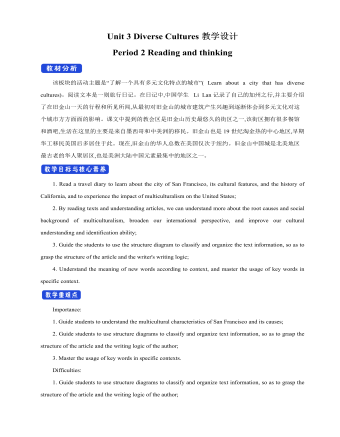
新人教版高中英语必修3Unit 3 Diverse Cultures教学设计二
- 页数:5页
- |大小:461.32KB
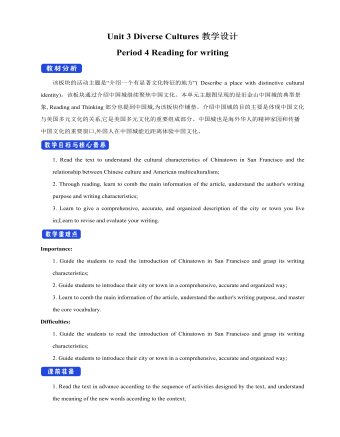
新人教版高中英语必修3Unit 3 Diverse Cultures教学设计四
- 页数:5页
- |大小:92.81KB
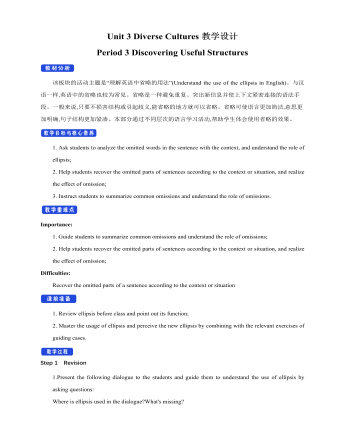
新人教版高中英语必修3Unit 3 Diverse Cultures教学设计三
- 页数:5页
- |大小:83.01KB
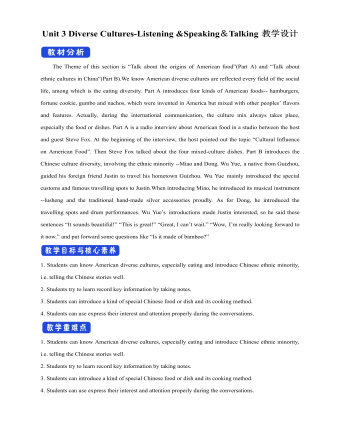
新人教版高中英语必修3Unit 3 Diverse Cultures-Listening &Speaking&Talking教学设计
- 页数:7页
- |大小:714.50KB
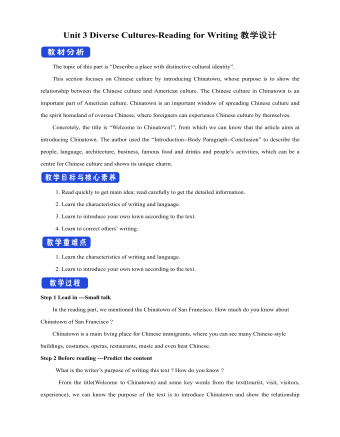
新人教版高中英语必修3Unit 3 Diverse Cultures-Reading for Writing教学设计
- 页数:5页
- |大小:100.89KB
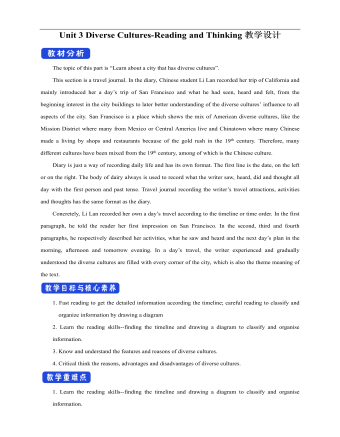
新人教版高中英语必修3Unit 3 Diverse Cultures-Reading and Thinking教学设计
- 页数:5页
- |大小:289.28KB
热门课件教案
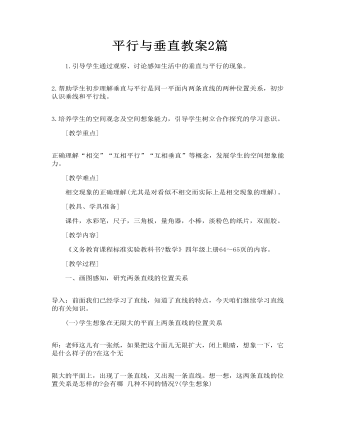
平行与垂直教案2篇
- 页数:9页
- |大小:101.04KB
- 课件教案
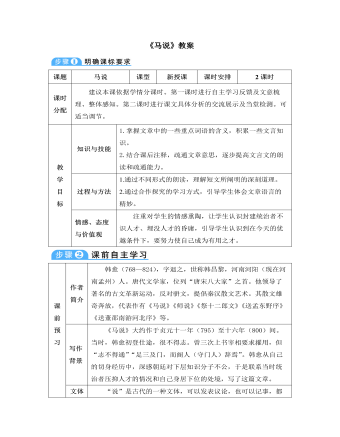
部编版语文八年级下册《马说》教案
- 页数:8页
- |大小:367.50KB
- 课件教案
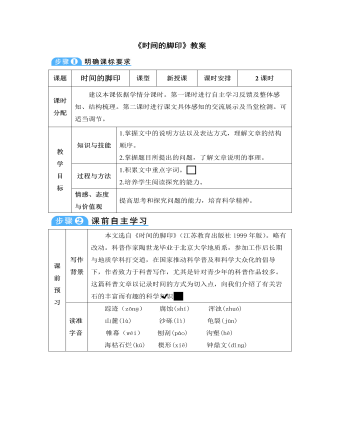
部编版语文八年级下册《时间的脚印》教案
- 页数:4页
- |大小:511.50KB
- 课件教案
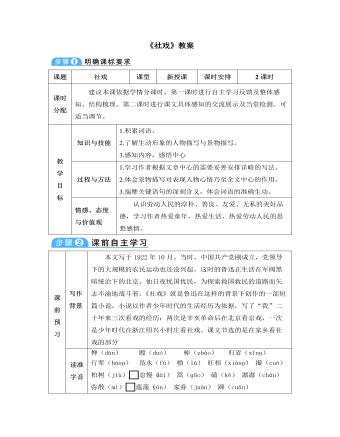
部编版语文八年级下册《社戏》教案
- 页数:8页
- |大小:340.00KB
- 课件教案
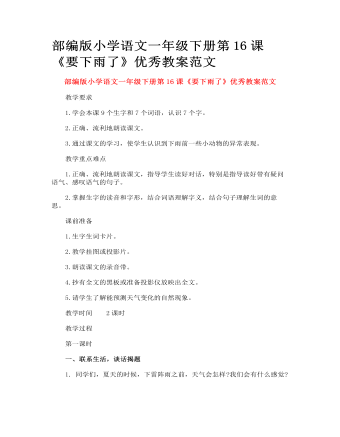
部编版小学语文一年级下册第16课《要下雨了》优秀教案范文
- 页数:4页
- |大小:19.94KB
- 课件教案

精选高中生期末评语
- 页数:42页
- |大小:7M
- 课件教案
今日更新

精选高中生期末评语
- 页数:42页
- |大小:7M

××县招商局2024年上半年工作总结
- 页数:12页
- |大小:142.54KB

“四零”承诺服务创建工作总结
- 页数:5页
- |大小:39.83KB
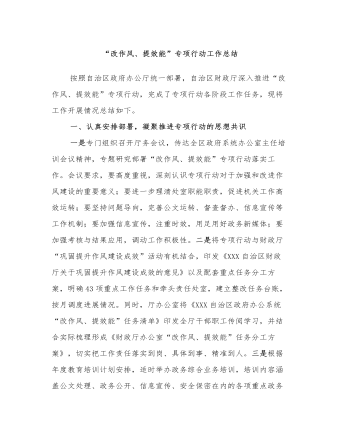
“改作风、提效能”专项行动工作总结
- 页数:6页
- |大小:139.05KB
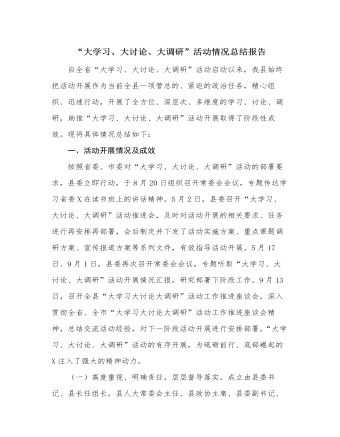
“大学习、大讨论、大调研”活动情况总结报告
- 页数:7页
- |大小:26.12KB
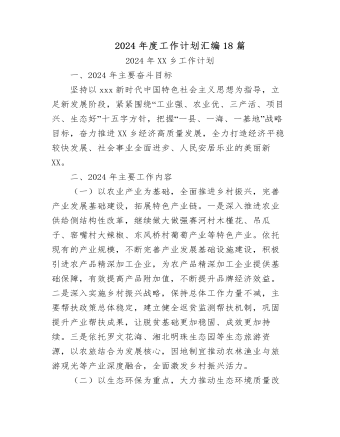
2024年度工作计划汇编(18篇)
- 页数:72页
- |大小:196.93KB







 微信支付
微信支付  支付宝支付
支付宝支付 